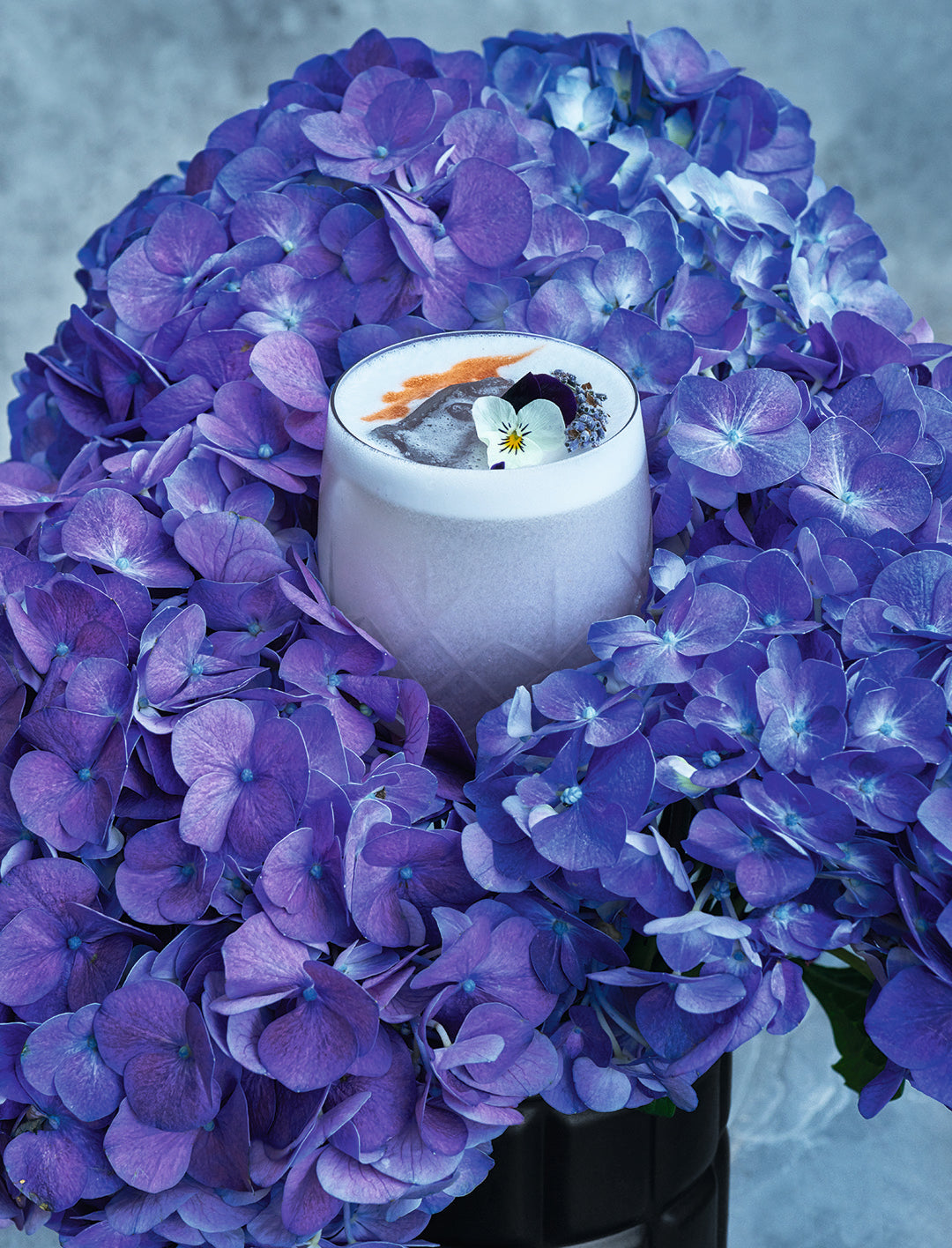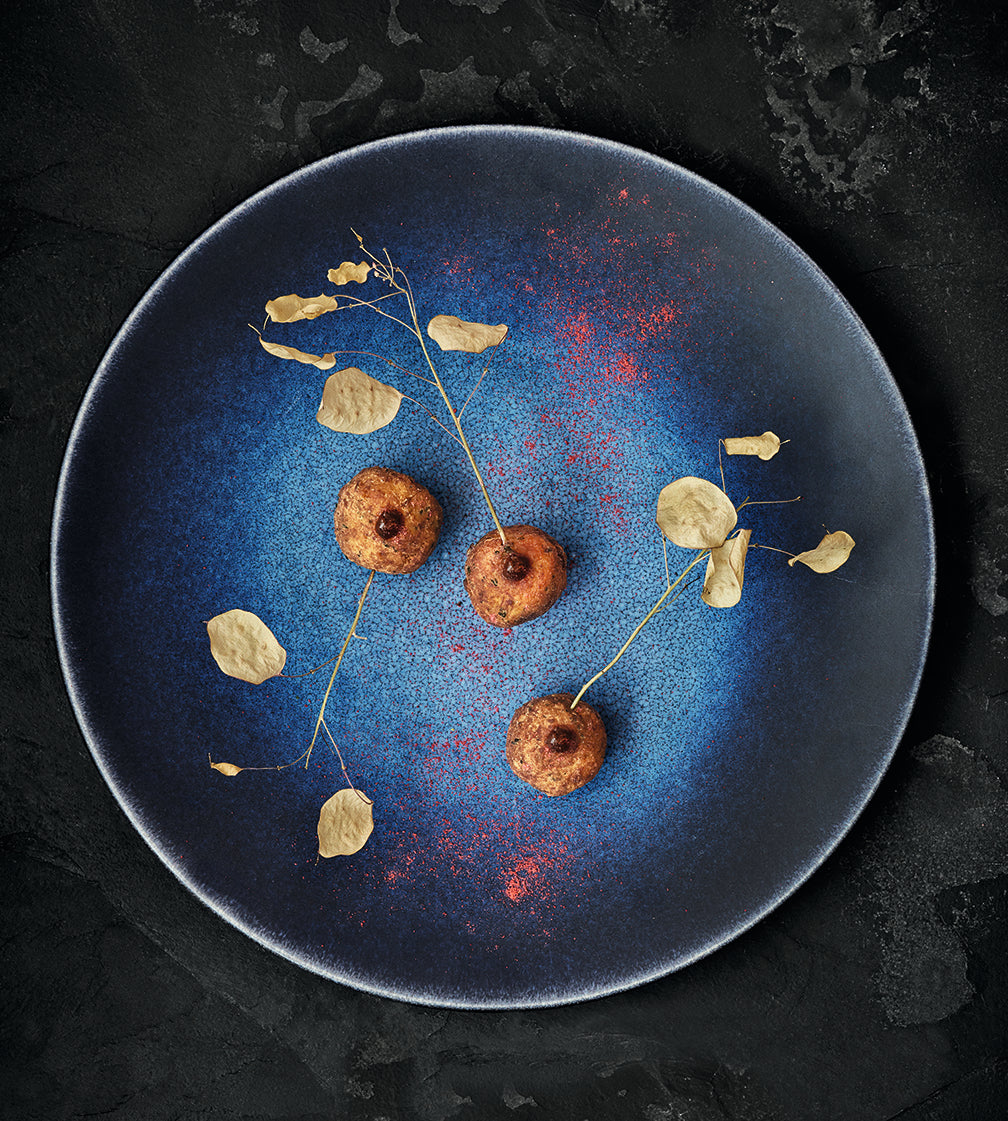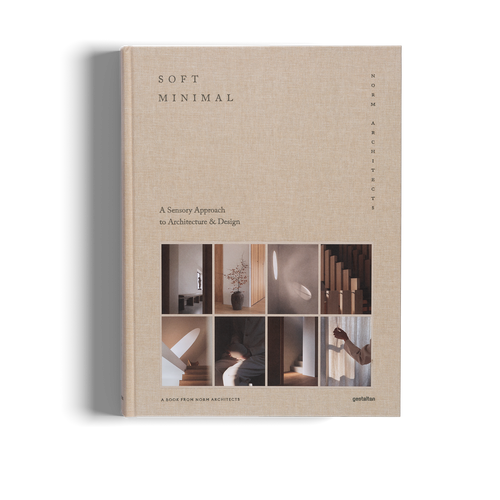
09/2019 food & beverages visual culture
"Kitchens should be like orchestras where each instrument has its own time and rhythm," explains acclaimed Mexican chef Martha Ortiz. Her decorative personality is adding a deeper narrative to food through plating in Mexico City and London, where she uses her restaurants as podiums to celebrate feminism and add integrity to Mexican cuisine.
Getting the recognition of Mexican peers was slow, but now she stands on the frontline
Ortiz's culinary ascent is anything but straightforward. She encountered roadblocks in her earlier endeavors but didn't admit defeat, instead, she rose to her feet to challenge a system with a male bias. Equipped with a Political Science degree, Ortiz looks to contextualize each of her dishes with a narrative. "Fairy tale stories" she explains, with fragments that evoke feminine traits that she wants to share with the world.

The traditional chile en nogaga, otherwise known as the jewel of Mexican cooking. (Photo: Jean Cazals)
In our book, Story on a Plate, she discusses the delinquency and theory applied to her cooking at Dulce Patria and Ella Canta, her restaurants in Mexico City and London respectively. Getting the recognition of Mexican peers was slow, but now she stands on the frontline and is helping propel authentic Mexican cuisine to new corners of the world.
The daughter of painter Martha Chapa, she was surrounded by art, food, and culture from a young age. Looking up at the Mexican flag as a child, she noticed it was "gastronomic," Ortiz explains, "the eagle eating a snake perched on a prickly pear and cactus garland. Sophisticated delicacies that traced a favorable destiny for the magnanimous Mexican cuisine and for the heart of a young cook."

A plate of prime rib of beef barbacoa styled with pink peppercorns. (Photo: Jean Cazals)
Food sparked her youthful imagination, but she wouldn't pursue it fully until after university. Moving to Paris and later Hong Kong, Ortiz practiced different cooking techniques to perfect her craft before returning to Mexico.
“They don’t educate or encourage you (young girls) to become powerful or ambitious”
In 2003, she opened her first restaurant Águila y Sol. For five years it lived as a popular triumph, Ortiz introduced regional flavors such as mole sauce from Oaxaca to fine-dining in the capital. But in 2008 the local government forced her to close the establishment because it was one parking spot shy of regulations. Looking back at this moment in her life she told us:
"I was forced to close Águila y Sol for reasons beyond my control. I was deeply hurt, but over time I have learned that it was the sum of mean reasons that had to do with the efforts and causes of women: the fact that I am a woman, not to mention the political situation that persisted in my country at that time. It was like a punishment since the restaurant was outstanding and the product of my efforts. It was a pioneer in praising Mexican gastronomy and had its own esthetic rules in place. All the decorations and processes were ceremonial. Today, due to this experience, I have become a more sensible and stronger woman. Those bitter flavors have amalgamated with sweeter ones."

The Talavera Púrpura: butterfly pea powder, Casamigos Blanco Tequila, Huana Guanabana rum liqueur, homemade papaya shrub, lime, egg white, and lavender syrup. (Photo: Jean Cazals)
Sexism in the food world is a global issue, fine-dining establishments have long been regarded as a male domain. Jen Agg in an opinion piece for the New York Times said chefs entering the industry are taught to worship "brutal but allegedly brilliant men," exemplified by 'bad boy' chefs like Marco Pierre White and Gordon Ramsay. This male bias occurs throughout, from the kitchen to ownership to city legality it appears.
Ortiz was switched on to gender bias while at school, quickly noticing a lack of educational opportunities for girls. “They don’t educate or encourage you to become powerful or ambitious,” Ortiz says. “So I really said, ‘I will show them that I’m a woman and that we can be powerful.’ That was my mantra.”
“I am sort of an artful crafter that likes to embroider flavors with emotions in the canvas of dishes and plates. It is like gastronomic expressionism, combined with the peculiar seal of my own definition of beauty”
The kitchen is not a democracy, it is a monarchy, and Ortiz is using her influence to empower femininity and educate through boldly colorful food. Instead of championing a culture of fear in her kitchens, Ortiz treats her ones like an orchestra. "Kitchens should be like orchestras where each instrument has its own time and rhythm. Their melodies are like the dance of preparations and both should be guided by a director that sees in his or her mind the complete and final work of art," Ortiz explains. These final pieces of work are stories of the things she loves: museums, opera, color, the feminine spirit.

A plate of corn pork marbles topped with salsa borracha. (Photo: Jean Cazals)
Plating brings all the pieces together. "Plating is fundamental in my narratives and I must humbly state that my presentations can be classified as art. I am sort of an artful crafter that likes to embroider flavors with emotions in the canvas of dishes and plates. It is like gastronomic expressionism, combined with the peculiar seal of my own definition of beauty."
Ortiz begins by sketching her vision of the plate, adding both historical and emotional elements that stitch the message together. This determines whether her idea can be translated onto a plate. Her ideas come from the high contrast of Mexican culture that inspires her every day. She tells us, "when in doubt, I run to a museum, such as the National Anthropology Museum where I remember the poem “Sunstone” by Octavio Paz, a monument that defines our identity. I also visit the mural paintings of Tamayo where the characters and colors appear to be their own universes, within the cosmos where the meaning of being Mexican is defined."

As part of Wild Beauty, a tasting menu at Ella Canta, Ortiz teams grilled red cabbage with a pipián sauce, fresh basil, deep-fried capers, and freshly blanched peas. (Photos: Jean Cazals)
Ortiz hopes to express Mexican culture through cuisine and plating—helping to educate people beyond the Tex-Mex fusion of tacos and burritos. To her, Mexican and Latin American gastronomy are "powerful and sensual." She expects Latin American cuisine to conquer global gastronomy for the next three decades. The ingredients and techniques are more sophisticated she explains, the contrast of flavors is already winning over swaths of the gastronomy world.
In 2017, she said you wanted to break the "caramel ceiling" for female chefs. "Apparently, the caramel is still very hard," she tells us, "I think that awareness and respect for women’s work are just starting." It is a recipe that still needs many elements and a long time to cook according to Ortiz.
Find out more about Martha Ortiz and plating through our latest release.













